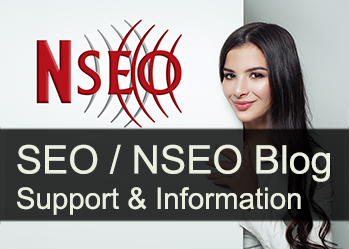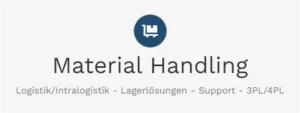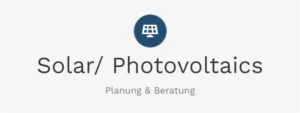Forbes & Co. lose up to 50% of news readers – The traffic collapse is here: Why Google's AI is becoming an existential trap for publishers
Xpert pre-release
Language selection 📢
Published on: August 23, 2025 / Updated on: August 23, 2025 – Author: Konrad Wolfenstein

Forbes & Co. lose up to 50% of news readers – The traffic collapse is here: Why Google's AI is becoming an existential trap for publishers – Image: Xpert.Digital
Who wins the battle for clicks now – and who goes under
Beyond Google: These strategies truly secure the future of news media ### Total news fatigue: Why your audience is tuning out and how to reach them anyway ### The great media shakeup: How ChatGPT and others are changing the rules of the game forever ### From traffic hunter to loyal community: The radical change that publishers must now master ###
Surviving the News: 6 Strategies for Journalism in the AI Age
The digital news world is experiencing an earthquake of historic proportions. The long-standing rule – maximizing traffic from Google and Facebook for maximum – revenue has expired, tearing deep rifts into the landscape of media companies. A perfect storm of three powerful forces is sweeping across the industry: generative AI like ChatGPT and Google's new AI search, which are blocking the path to news sites; the major social media platforms' strategic shift away from journalistic content; and a profound news fatigue that is increasingly causing audiences to tune out.
The result is a dramatic collapse in traffic, eroding the foundations of countless publishers and raising an existential question: How can quality journalism survive in this new era? The simple pursuit of clicks is over. The future belongs to those who manage to build a direct, valuable, and resilient relationship with their audience.
This article delves deep into the "Great Reset." We analyze why the old system is breaking down, the role AI plays as both friend and foe, and how audiences have changed. Above all, we shed light on the survival strategies that are now crucial: from intelligent paywalls to building loyal communities in formats like newsletters and podcasts to tapping into new revenue streams. Using concrete case studies, we'll clarify who's winning and who's losing in this upheaval – and which strategic compass can guide publishers toward a sustainable future.
Suitable for:
The Great Reset: Navigation Strategies for News Publishers in the Age of AI and Dwindling Traffic
A paradigm shift for digital journalism
The digital news industry is at a critical inflection point, marking the end of an era and the beginning of a profound reordering. The once-dominant paradigm of "growth at any cost," in which publishers generated massive amounts of traffic through search engines and social networks to maximize advertising-based revenue, is collapsing under the pressure of converging forces. Technological disruptions in the form of generative artificial intelligence (AI), strategic realignments by platform giants that systematically deprioritize news, and a profound shift in audience psychology, manifested as rampant news fatigue, are creating a perfect storm. These developments are not isolated trends, but interrelated phenomena that pose an existential threat to the sustainability of digital journalism.
This report argues that survival and future success in this new landscape require a fundamental strategic realignment. The focus must shift from reliance on volatile platforms to building direct, valuable, and resilient relationships with one's own audience. This requires not just incremental adjustments, but a holistic transformation of content strategies, business models, and technological adoption. To capture the complexity of this challenge, this report first analyzes the causes and extent of the traffic collapse, particularly driven by the rise of AI-powered search results. It then explores the multifaceted role of generative AI as a competitor and potential traffic source. This is followed by an examination of the fragmented audience landscape and changing consumption habits. Finally, it assesses publishers' survival strategies, from innovative paywall models to diversifying revenue streams, and contextualizes them through case studies of new and established players in the market. The aim is to paint a clear picture of current challenges and provide a strategic compass for navigating an uncertain future.
The Collapse of Search Traffic: How AI Overviews Are Rewriting the Web
Quantifying the crisis
The foundation of the digital publishing business of the past two decades – the steady stream of users via search engines – is eroding at an alarming rate. Data from the digital intelligence firm Similarweb paints a dramatic picture of this decline. Organic traffic to news websites, which peaked at over 2.3 billion monthly visits in mid-2024, has fallen to under 1.7 billion by May 2025. This represents a loss of more than 600 million monthly visits in less than a year, a development that directly threatens the financial base of countless publishers. These figures are not mere statistical fluctuations, but the symptom of a fundamental shift in how information search works online.
The rise of the “answer machine” and zero-click searches
The main reason for this dramatic decline is the transformation of search engines, especially Google, from pure referral portals to so-called "answer engines." Instead of simply redirecting users to the most relevant web pages, new AI-powered features aim to synthesize and present the answer to a query directly on the search results page. This phenomenon, known as "zero-click search," often eliminates the need for users to click on a link – and thus visit a publisher's website –
The introduction of Google's AI overviews (formerly Generative Search Experience) in May 2024 massively accelerated this trend. In just one year, the proportion of zero-click searches rose from 56% to a staggering 69%, according to Similarweb. This means that almost seven out of ten searches now end on Google without a single click on an organic search result. This development represents a fundamental decoupling of visibility and traffic. Even if a publisher ranks on the first page for a particular keyword, this no longer guarantees the previously self-evident flow of users. The unwritten, symbiotic agreement in which publishers provided content for indexing and received traffic in return is being unilaterally terminated by Google. The search engine is no longer positioning itself as a gateway to the web, but as an end destination that absorbs the value of publishers' content without providing adequate compensation.
The analysis of user behavior
Research by the Pew Research Center confirms the devastating impact on user behavior and provides the psychological explanation for the traffic decline. An analysis of browser data from 900 US adults found that users are significantly less likely to click on a traditional link in search results that include an AI summary. The click-through rate drops to just 8% in these cases, compared to 15% for searches without an AI summary. The source links cited in the AI summary itself are clicked even less frequently, at just 1% of the time.
Furthermore, AI summaries are more likely to result in the complete abandonment of the search session. 26% of users abandon their search after reading an AI summary, compared to just 16% for traditional search results. The AI response satisfies users' information needs to such an extent that they no longer see any reason to delve deeper into the subject matter or consult the original sources. This not only undermines publishers' business models but also risks trivializing information consumption.
Particularly affected by this development are so-called "timeless content" – guides, explanatory pieces, and background articles in which publishers have invested heavily to generate long-term traffic through SEO. While current news may still receive clicks through special formats like "Top Stories," the very informative, question-based search queries that typically lead to timeless content are most frequently answered by AI overviews. AI thus commodifies and absorbs the value of this elaborately produced content, depriving it of its traffic-generating potential.
Suitable for:
Google's contradictory representation
Given this overwhelming data, Google's official communication is remarkable. Company executives repeatedly emphasize that the web is "thriving" and that AI capabilities are "creating new opportunities for websites to be discovered." Critical studies are regularly dismissed as methodologically flawed. At the same time, however, Google fails to provide its own transparent data to support these claims. On the contrary, even in Google's own tool, Search Console, many webmasters observe the aforementioned "great decoupling of impressions and clicks," which underscores the declining value of pure visibility in search results. This discrepancy between the public narrative and the realities measured by publishers and analysts deepens the media industry's distrust of the tech giant, on which it remains existentially dependent.
Our recommendation: 🌍 Limitless reach 🔗 Networked 🌐 Multilingual 💪 Strong sales: 💡 Authentic with strategy 🚀 Innovation meets 🧠 Intuition

From the bars to global: SMEs conquer the world market with a clever strategy – Image: Xpert.digital
At a time when a company's digital presence determines its success, the challenge is how to make this presence authentic, individual and far-reaching. Xpert.Digital offers an innovative solution that positions itself as an intersection between an industry hub, a blog and a brand ambassador. It combines the advantages of communication and sales channels in a single platform and enables publication in 18 different languages. The cooperation with partner portals and the possibility of publishing articles on Google News and a press distribution list with around 8,000 journalists and readers maximize the reach and visibility of the content. This represents an essential factor in external sales & marketing (SMarketing).
More about it here:
Publishers in Transition: Strategies for the Fragmented Media Ecosystem
The double-edged sword of generative AI: ChatGPT as a competitor and traffic source
As Google redefines the relationship between search and content, another equally disruptive player, ChatGPT, has emerged. OpenAI's platform embodies the ambivalence of generative AI for the news industry like no other product: It is simultaneously a direct competitor for user attention and a potentially valuable, albeit highly selective, new traffic source.
Suitable for:
- Breaking through traffic through Google AI overviews: The new challenge for website operators and their traffic development
ChatGPT's rapid rise in news consumption
The speed with which ChatGPT has established itself as a tool for news consumption is unprecedented. User numbers have grown explosively, reaching 800 million weekly active users by 2025. Even more telling is the change in usage behavior. Between January 2024 and May 2025, the number of news-related queries ("prompts") on ChatGPT increased by 212%, while comparable searches on Google declined slightly over the same period. This signals a conscious shift away from traditional search toward conversational AI systems for information retrieval. Users on ChatGPT are no longer just looking for headlines, but increasingly for context and explanations on complex topics such as finance, politics, and economics, indicating a desire for deeper engagement beyond the quick answers offered by Google.
A new source of highly selective referral traffic
Paradoxically, despite appearing as a direct competitor, ChatGPT has become a significant source of traffic for a small group of publishers. While the traffic loss from Google's AI overviews is an industry-wide phenomenon, the gains from ChatGPT recommendations are highly concentrated. ChatGPT referrals to news websites have increased 25-fold within a year – from less than one million to over 25 million visits between January and May.
The emergence of AI “kingmakers”
However, these traffic gains are far from evenly distributed. Data shows that a handful of publishers are receiving the lion's share of this new traffic. Publications like Reuters, the New York Post, and Business Insider are the main beneficiaries. This concentration is no coincidence, but often the result of direct commercial partnerships and licensing agreements with OpenAI. While these select publishers are tapping into a new, valuable user stream, other major media outlets like CNN are missing out in the recommendation rankings.
This development points to the emergence of a new, opaque "fenced garden." Unlike the open web, where traffic was theoretically accessible to anyone who mastered the rules of SEO, success in the AI ecosystem may depend on private business deals. This creates a significant barrier to entry for smaller, independent publishers and establishes a new hierarchy based less on journalistic authority or SEO expertise and more on the ability to form strategic partnerships with the dominant AI companies.
Furthermore, user behavior could bifurcate. Users could turn to Google's AI for a quick, fact-based answer (a form of "discovery") and then turn to ChatGPT for deeper insights and contextualized explanations from trusted sources prominently featured through partnerships. In this scenario, publishers securing such partnerships could assume the role of "verifier" or "in-depth analysis source." This would be a potentially more valuable position than simply being an information provider for a Google summary, as it implies a more direct and valuable relationship with the user. The ability to navigate this new ecosystem thus becomes a crucial strategic competency for publishers.
Beyond search: The fragmentation of news sources and audience fatigue
The decline in search traffic is only one part of a larger upheaval. At the same time, other traditional traffic sources are also eroding, while audience behavior and preferences are fundamentally changing. The era in which publishers could rely on a handful of large platforms for a large portion of their audience is coming to an end. It is being replaced by a fragmented landscape characterized by new formats and an increasingly fatigued and selective user base.
Suitable for:
- Content upuality and the AI search: the #1 factor that AI models really love – why your old content is now invisible!
The Great Migration from Social Media
Social networks, once the undisputed kings of referral traffic, have evolved from reliable partners to unpredictable and often disappointing channels for news publishers. Data shows an unstoppable downward trend in referrals from major platforms. Between 2023 and 2024, referral traffic from Facebook plummeted by 48% and from X (formerly Twitter) by 27%.
This development is the result of a conscious strategic realignment by the platform operators. Meta, in particular, systematically deprioritized news and political content in order to focus on entertaining formats such as short videos and avoid regulatory disputes. The abolition of the "Facebook News" tab in the US, Australia, and several European countries marked the symbolic culmination of this development. Meta justified this step by pointing out that usage of this feature had declined by over 80% and that users primarily visited the platform for social interactions rather than news consumption. For publishers, this marks the end of an era in which they could rely on Facebook's huge, passive user base for their reach.
The phenomenon of news fatigue
However, the decline in traffic is not solely due to technological or platform-strategic changes. It also reflects a profound psychological shift in the audience: news fatigue. This phenomenon describes a state of psychological exhaustion caused by information overload, especially negative and distressing news.
The nonstop news cycle, amplified by the design of social media platforms that encourages endless scrolling, leaves many people feeling overwhelmed and apathy. A study by the Reuters Institute found that 36% of people actively avoid news to protect their mental health. Overall interest in news has steadily declined in recent years, even in years with major political events like elections. This provides crucial context for understanding why users are less inclined to actively seek out news or click on links, even when presented with them. The problem isn't just that the path to news is being blocked; many users no longer want to take that path at all.
The new formats of news communication
In response to news fatigue and changing platform dynamics, users, especially younger audiences, are turning to new formats and channels.
- First, news consumption has shifted significantly toward video. Two-thirds of global users watch short news videos weekly. In the US, social media and video networks (54% of users) have overtaken television (50%) and news websites (48%) as the primary news source for the first time. Platforms like TikTok and YouTube have become key information channels for Generation Z.
- Second, audio formats are gaining importance. News is the second most consumed podcast genre. They attract a significantly younger audience (average age 47 compared to 67-70 for TV news channels) and foster a deeper, trust-based relationship between the hosts and their audience.
- Third, direct distribution channels like newsletters are experiencing a renaissance. Platforms like Substack allow authors to bypass the volatility of large platforms and build a direct, monetizable relationship with their most loyal readers.
These formats are often successful because they offer an antidote to news fatigue. A newsletter or a daily podcast is a self-contained, curated product. It provides structure and a sense of completeness, in contrast to the endless, context-free stream of social media feeds. This suggests that users aren't necessarily information-fatigue, but rather tired of the overwhelming and anxiety-inducing way information is often presented. Publishers who understand this and design their products accordingly have a decisive competitive advantage.
In summary, the era of casual news consumption is over. Publishers can no longer rely on massive amounts of "accidental" traffic from users who stumble upon their content while using Google or Facebook. The new landscape demands conscious consumption. Success depends on cultivating a loyal audience that actively and purposefully seeks out their offerings – be it an app, a newsletter, or a – . This audience is smaller, but potentially far more valuable.
🎯🎯🎯 Benefit from Xpert.Digital's extensive, fivefold expertise in a comprehensive service package | R&D, XR, PR & SEM

AI & XR-3D-Rendering Machine: five times expertise from Xpert.digital in a comprehensive service package, R&D XR, Pr & SEM – Image: Xpert.digital
Xpert.Digital has in-depth knowledge of various industries. This allows us to develop tailor-made strategies that are tailored precisely to the requirements and challenges of your specific market segment. By continually analyzing market trends and following industry developments, we can act with foresight and offer innovative solutions. Through the combination of experience and knowledge, we generate added value and give our customers a decisive competitive advantage.
More about it here:
Future of News: From Mass Traffic to Reader Engagement
Survival strategies: The reorientation of publishers’ business models
Given the collapse of traditional traffic sources and profound shifts in audience behavior, a radical reorientation of business models for news publishers is not just an option, but a necessity for survival. The old model, which aimed to maximize reach to increase advertising revenue, is no longer viable. The future of digital journalism depends on the ability to develop diversified and resilient revenue streams that focus on direct value for readers.
Suitable for:
The move away from advertising dependence
The dependence on programmatic advertising, which is directly tied to traffic volume, is proving increasingly precarious. While advertising remains an important source of revenue, its share is shrinking compared to reader revenue, and its volatility is a major concern for publishers. The realization that a business model dependent on uncontrollable third-party algorithms is inherently unstable has led to a strategic reorientation across the entire industry.
The future lies in reader financing: Paywall strategies in transition
Direct monetization of content by readers has become a central pillar of the new publishing strategy. A survey found that 76% of publishers now consider subscriptions their most important source of revenue. The implementation of paywalls has evolved from a risky experiment to an industry-wide norm. The most common models are the hard paywall, which blocks all content; the metered paywall, which allows a certain number of free articles per month; and the freemium model, which distinguishes between free basic content and paid premium articles.
The most advanced development in this area is the rise of dynamic, AI-driven paywalls. Instead of applying a one-size-fits-all solution to all users, these intelligent systems analyze the behavior of each individual visitor in real time. Based on factors such as visit frequency, articles read, traffic source, and potential advertising revenue, an algorithm decides whether the user will be presented with a hard paywall, a subscription offer, a registration prompt, or continued free access with advertising. The goal is to maximize the "customer lifetime value" of each user by individually adapting the monetization strategy.
A prominent example of the move toward reader funding is the BBC's paywall experiment in the US. In June 2025, the British public broadcaster introduced a dynamic, engagement-based paywall for its US audience for the first time. For $8.99 per month or $49.99 per year, users receive unlimited access to content. The dynamic model evaluates user engagement levels to decide when to trigger the paywall. However, the immediate impact on traffic was noticeable: In July, the first full month after the launch, visits to bbc.com in the US fell by 16% year-on-year. This highlights the fundamental dilemma of paywalls: the trade-off between generating direct revenue and the potential loss of reach and advertising potential.
Beyond subscriptions: tapping into new revenue streams
Successful publishers recognize that subscriptions alone are often not enough to build a sustainable business. Diversifying revenue streams is crucial. Forecasts predict that alternative revenue streams will account for over 21% of publishers' total revenue by 2024. The most promising strategies include:
- Product bundling: The New York Times has demonstrated the success of bundling its core news offering with other high-quality digital products such as "NYT Cooking," "NYT Games," and the sports portal "The Athletic." This increases the perceived value of the subscription, improves customer loyalty, and significantly boosts average revenue per user.
- Events: Both virtual and physical events, from conferences to webinars to festivals, offer an excellent opportunity to generate revenue from ticket sales and sponsorships while deepening community engagement.
- E-commerce and affiliate marketing: This is a rapidly growing area. 68% of publishers already generate revenue through affiliate marketing by recommending products in their content and receiving a commission upon purchase. This works particularly well in niches such as product testing, travel, or cooking.
- Memberships and donations: Instead of a hard paywall, some publishers like The Guardian rely on a voluntary membership and donation model. This appeals to readers' loyalty and their willingness to financially support independent journalism without restricting access to information.
These strategies demonstrate that the most successful diversification approaches are not isolated business units, but must be deeply integrated into the core journalistic product. E-commerce works best when based on trusted editorial testing. Events are most attractive when they offer access to the journalists and expertise that audiences already value. In this sense, revenue diversification is not only a financial but also an editorial strategy that requires a cultural shift in newsrooms – away from being pure text producers toward being developers of diverse, value-driven products and experiences.
Winners, losers and new players: case studies from practice
The tectonic shifts in the digital media landscape have created a clear divide between winners and losers. While established, traditional media brands are struggling with dramatic drops in traffic, new, more agile players are taking advantage of the changed conditions to gain market share. An analysis of current data and an examination of specific business models illustrate the dynamics of this reordering.
Analysis of the top news websites in the USA
PressGazette data, based on Similarweb analytics for July 2025, paints a bleak picture for many of the biggest names in the US news business. The annual traffic losses are, in some cases, threatening their very existence. Forbes lost half of its traffic (-50%), the Daily Mail saw a 44% decline, and renowned brands like NBC News (-42%) and The Washington Post (-40%) also suffered massive losses. Even market leaders like CNN (-38%) and Fox News (-26%) are severely affected by the downward trend. These figures clearly demonstrate that size and brand recognition alone no longer offer protection against the disruptive forces of AI and changing platform strategies.
The following table summarizes the development for a selection of important news websites and compares the losses of established media with the growth of newer platforms.
Case studies on new business models
Substack – The creative economy as a news model
In sharp contrast to the losses of traditional media is the rise of Substack, which saw 40% year-over-year traffic growth over the same period. Substack's success is based on a radically different model: It's not a centralized newsroom, but rather a platform that allows individual writers to run their own subscription-based newsletters and build direct relationships with their audiences. Substack gives writers the tools to create a community while offering them autonomy and a large share of the revenue (typically 90% of subscription fees).
This model represents the "unbundling" of the traditional newsroom. Talented journalists who were once the face of a major publication can now become independent media entrepreneurs. This forces established publishers to redefine their own added value. It is no longer enough to simply employ talented writers; they must offer an infrastructure, a brand, and an ecosystem that is more beneficial to the writer than the path to complete independence.
Newsbreak – Growth at any price?
Newsbreak is another example of a fast-growing player, with 24% annual traffic growth. Newsbreak's model is based on the aggregation of hyperlocal news and a highly personalized app experience aimed at providing users with local information relevant to them. The company has over 50 million monthly users and is one of the most downloaded news apps in the US.
However, this impressive growth is overshadowed by serious ethical concerns. A Reuters report documented at least 40 cases since 2021 in which the platform spread AI-generated misinformation, published content from other websites under fictitious author names, and copied material from competitors. Furthermore, the company's opaque ties to China and Chinese investors have been criticized. Newsbreak serves as a cautionary tale of a business model that prioritizes scale and AI automation over editorial responsibility and ethical standards.
Athlon Sports – The Competitive Publishing Model
A third, emerging approach is being pursued by The Arena Group with brands like Athlon Sports, which saw a 325% year-on-year increase in page views. Their strategy, "competitive publishing," involves utilizing multiple, competing teams of authors to produce a high volume of "easily consumable and shareable" content on topical and viral topics. This approach is designed to capture the fleeting attention of audiences in the fragmented digital landscape through speed, volume, and strong optimization for search engines and social media. It's essentially a content factory-like model aimed at maximizing visibility in real time.
The contrast between Substack's model, based on trust and niche audiences, and Newsbreak's model, focused on scale and aggregation, reveals a new axis of polarization in the media landscape. Publishers face a fundamental strategic choice: Do they build deep, trust-based relationships with a smaller, paying audience, or do they attempt to capture the attention of the masses through automation and aggregation, with all the associated ethical risks? Attempting to pursue both paths simultaneously is doomed to failure, as the tactics required for mass reach (e.g., clickbait, rapid aggregation) undermine the trust essential to a subscription or membership model.
The imperatives for a sustainable journalistic future
An analysis of the current digital media landscape paints a picture of an industry in transition. The traditional advertising-revenue-based model, driven by massive traffic from search engines and social networks, has irreversibly collapsed. Generative AI is acting as a catalyst for this development, fundamentally changing how search works while simultaneously emerging as a new, unpredictable player in the information ecosystem. At the same time, the fragmentation of audience attention, coupled with deep-rooted news fatigue, is leading to a disengagement of users from traditional news channels.
In this challenging environment, publishers must fundamentally rethink their strategies to ensure a sustainable future for journalism. Five key imperatives can be derived from this analysis:
- Own the audience: The highest priority must be building direct, resilient relationships with your audience. The era of chasing reach at any cost is over; the era of deep engagement has begun. Investing in proprietary platforms like apps, cultivating email lists through high-quality newsletters, and building genuine communities are no longer optional extras, but the core of a sustainable strategy.
- Invest in uniqueness: In a world where AI can summarize standard information in seconds, the only defensible content is that which is unique, analytical, and valuable. Exclusive research, in-depth analysis, original commentary, and strong, trusted voices are the content that cannot be commodified. This is the content that audiences are willing to pay for.
- Embrace format diversity: Publishers must reach their audiences where they are and in the formats they prefer. This means a serious and strategic investment in short videos, podcasts, and audio articles. These formats can no longer be viewed as supplements to the written word, but must be developed as standalone, core products with their own editorial and monetization strategies.
- Implement intelligent monetization: The future of reader funding doesn't lie in rigid "one-size-fits-all" paywall solutions. Publishers must transition to dynamic, data-driven systems that intelligently balance subscription revenue, advertising, e-commerce, and other revenue streams to maximize the value of every user interaction. This requires close integration of data analytics, product development, and editorial teams.
- Rebuilding trust as a product: In an information environment increasingly contaminated by AI-generated misinformation and ethically questionable aggregators like Newsbreak, verifiable, high-quality, and ethically produced journalism is becoming a premium product. Trust is no longer just a journalistic principle; it is a crucial competitive advantage and the cornerstone of any form of direct reader funding.
The transformation ahead will be challenging and resource-intensive. It requires the courage to experiment, the willingness to abandon old certainties, and an unwavering focus on the value created for the audience. Publishers that embrace these imperatives have the opportunity to emerge stronger from the current crisis and create a new, sustainable foundation for journalism in the digital age.
Your global marketing and business development partner
☑️ Our business language is English or German
☑️ NEW: Correspondence in your national language!
I would be happy to serve you and my team as a personal advisor.
You can contact me by filling out the contact form or simply call me on +49 89 89 674 804 (Munich) . My email address is: wolfenstein ∂ xpert.digital
I'm looking forward to our joint project.






























